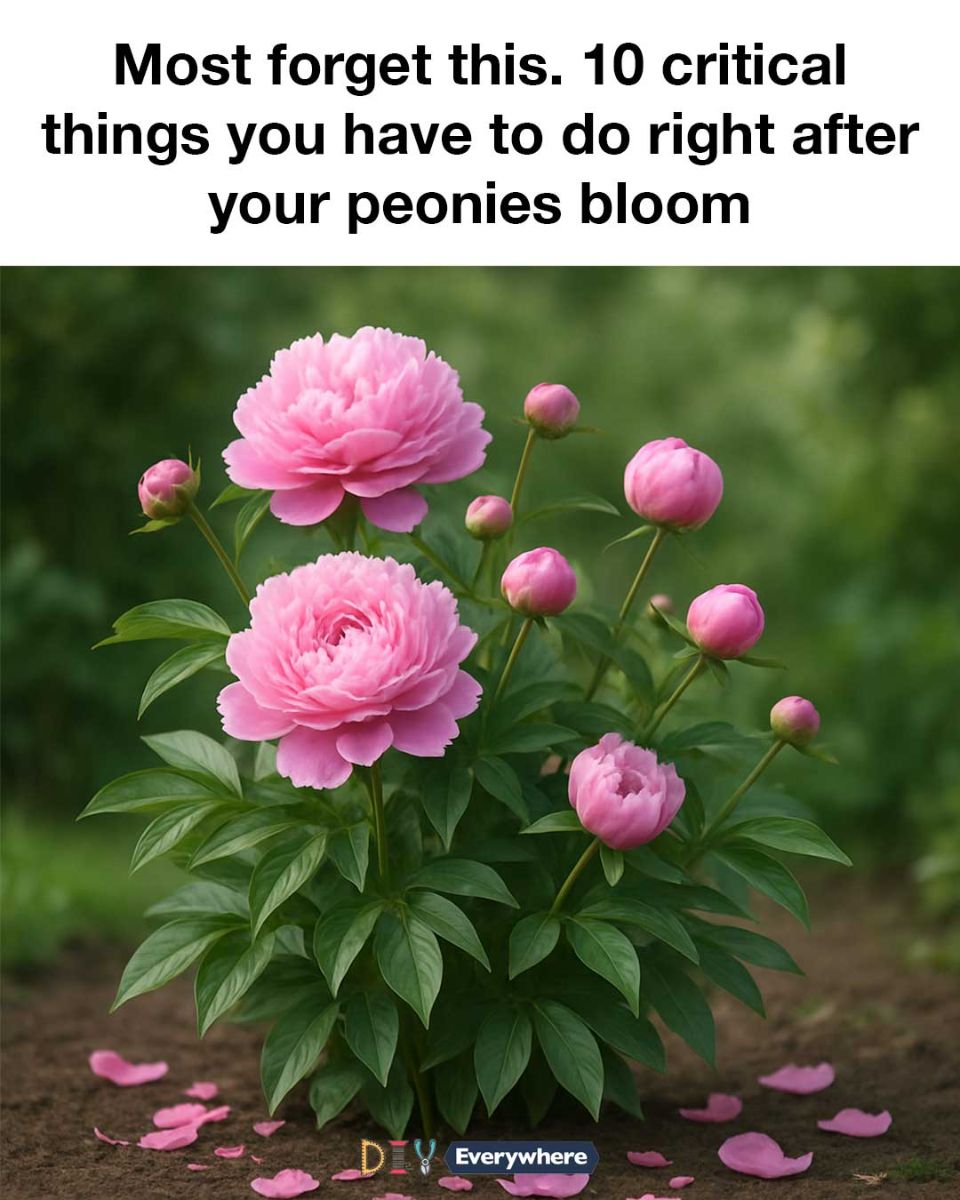Peonies are a beloved addition to many gardens, known for their lush, fragrant blooms and vibrant colors. However, once the blooming season is over, many gardeners are unsure of what steps to take to ensure their peonies remain healthy and ready for the next season. Proper post-bloom care is crucial for maintaining the health and vigor of your peony plants.
In this article, we will explore ten critical tasks that should be performed right after your peonies have finished blooming. These steps will help you maintain the health of your plants, encourage future blooms, and even allow you to share the beauty of your peonies with others.
Advertisement
1. Deadhead Spent Blooms for Continued Growth
Deadheading is the process of removing spent flowers from your peony plants. This is important because it prevents the plant from expending energy on seed production, allowing it to focus on root and foliage development instead. To deadhead your peonies, use a pair of sharp, clean scissors or pruning shears to cut the spent bloom just above the first set of healthy leaves. Be sure to dispose of the removed blooms to prevent any potential disease spread.
Regular deadheading throughout the blooming season can also help extend the flowering period. By removing spent blooms promptly, you encourage the plant to produce more flowers, resulting in a longer display of beautiful blooms.
2. Fertilize to Strengthen the Plant
After your peonies have finished blooming, it’s a good time to fertilize them to ensure they have the nutrients needed for strong growth. Use a balanced, slow-release fertilizer, such as a 10-10-10 formulation, applying it at a rate of about 1/2 cup per plant. Spread the fertilizer evenly around the base of the plant, taking care not to let it touch the stems or leaves, as this can cause burning.
Water the fertilizer into the soil thoroughly to help it reach the root zone. Fertilizing after blooming helps replenish the nutrients that were used up during the flowering process and supports the development of strong roots and foliage for the next growing season.
3. Water Deeply to Maintain Moisture
Peonies require consistent moisture, especially after blooming when they are focusing on root and foliage growth. Water your peonies deeply once a week, providing about 1 to 2 inches of water each time. This encourages deep root growth and helps the plant withstand dry periods.
Avoid overhead watering, which can promote disease. Instead, use a soaker hose or drip irrigation system to deliver water directly to the soil. Be sure to water early in the day to allow foliage to dry before nightfall, reducing the risk of fungal diseases.
4. Mulch to Retain Soil Moisture and Control Weeds
Applying a layer of mulch around your peonies can help retain soil moisture and suppress weed growth. Use organic mulch, such as shredded bark, straw, or compost, and apply a 2- to 3-inch layer around the base of the plant, leaving a small gap around the stems to prevent rot.
Mulching not only conserves moisture but also helps regulate soil temperature and adds organic matter to the soil as it breaks down. This creates a healthier growing environment for your peonies and reduces competition from weeds, allowing the plants to thrive.
5. Check for Pests and Diseases
continued on next page
ADVERTISEMENT

